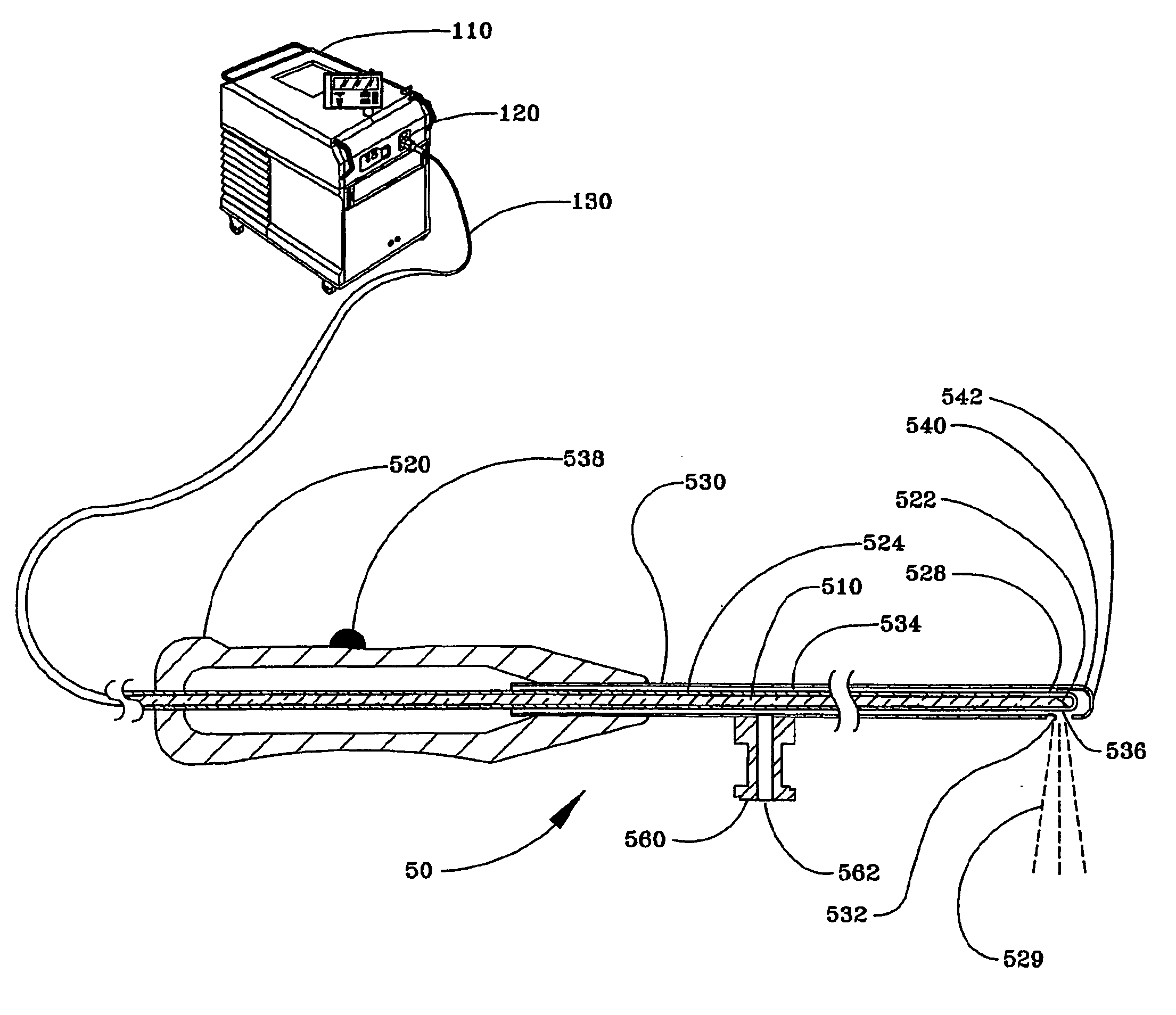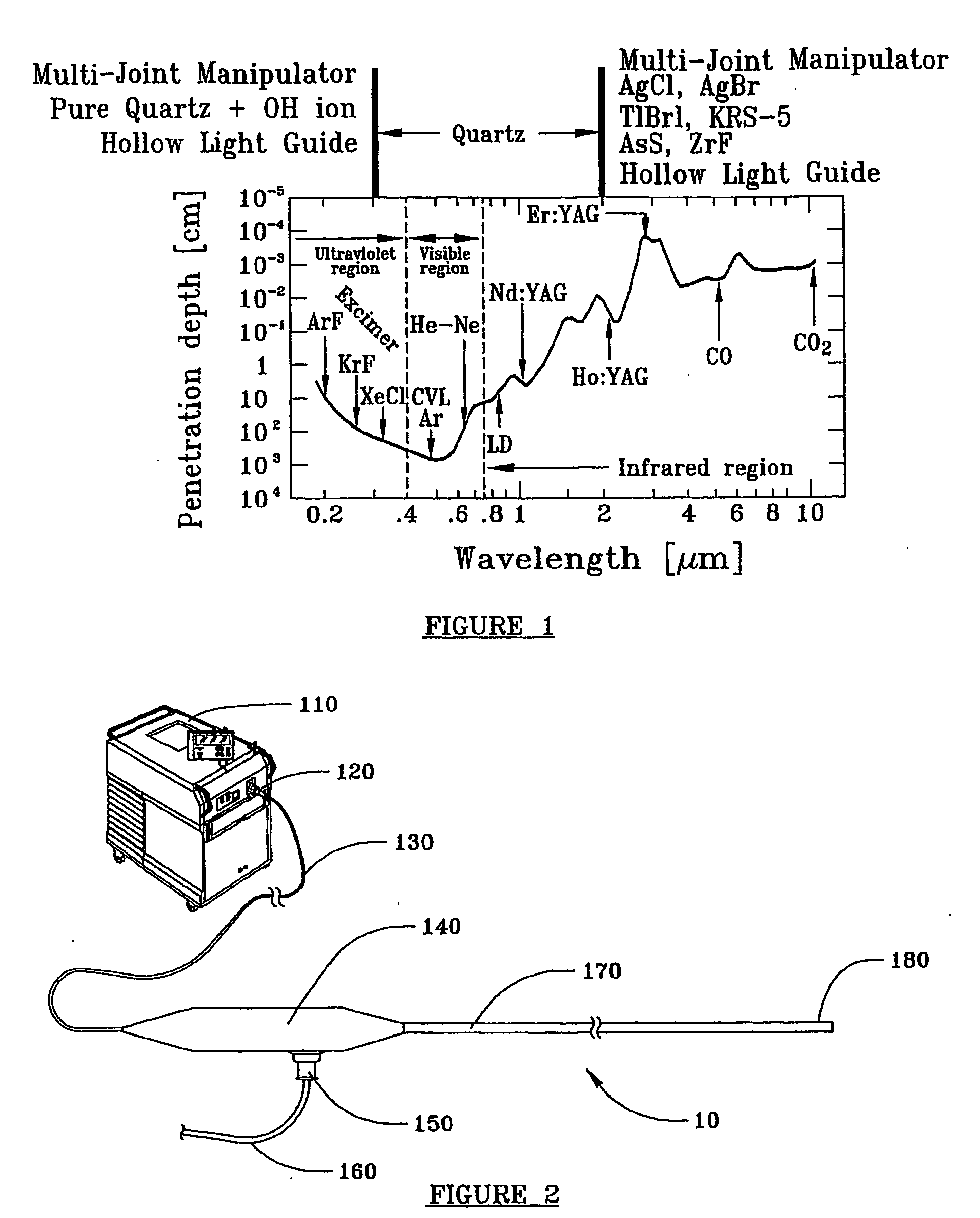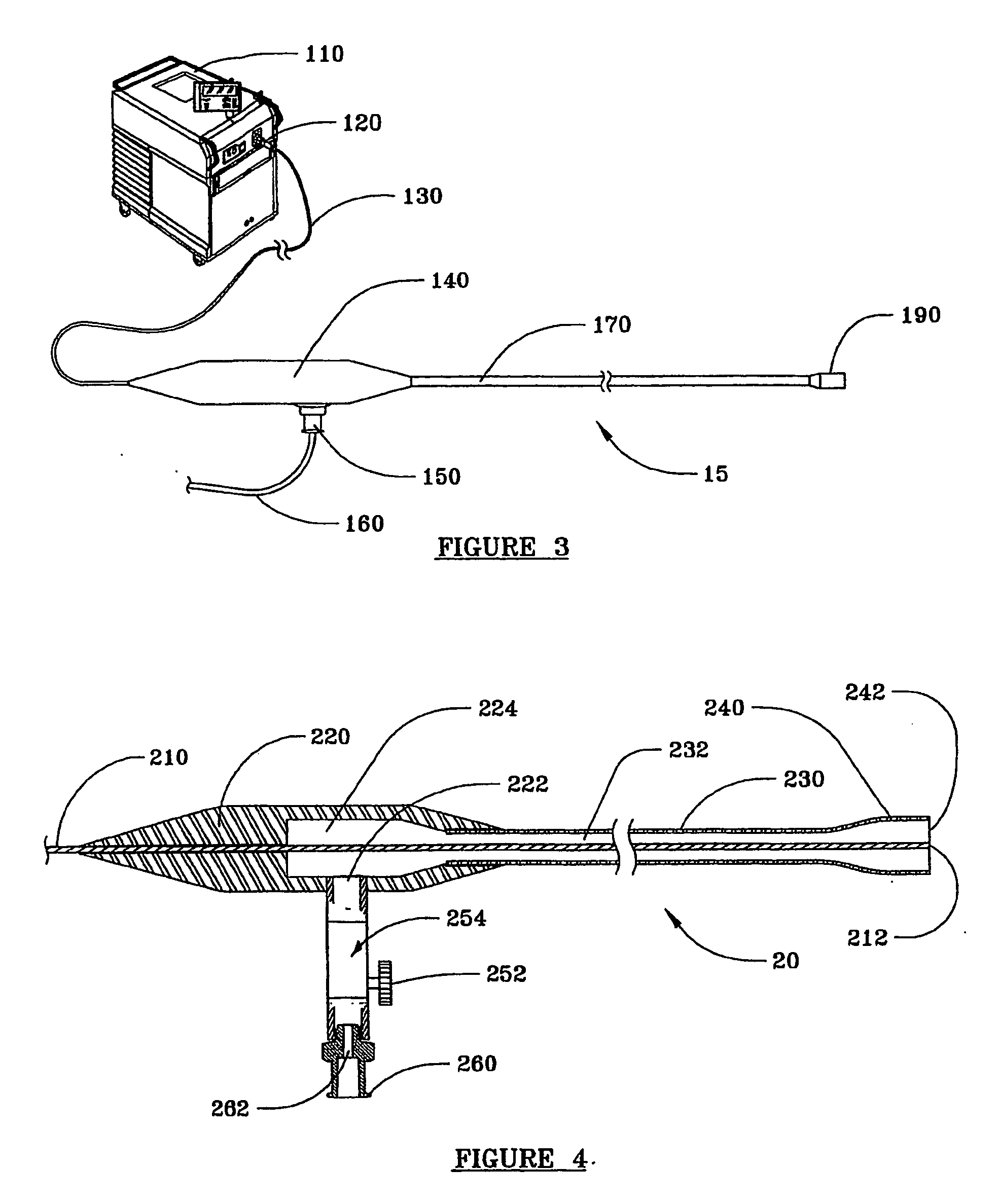Device and method for delivery of long wavelength laser energy to a tissue site
a long wavelength laser and tissue technology, applied in the field of laser energy delivery devices, can solve the problems of reducing the amount of laser energy reaching the target tissue, ablating or vaporizing the tissue, and wasting a substantial amount of laser energy, and achieve the effect of facilitating the placement of the open distal end
- Summary
- Abstract
- Description
- Claims
- Application Information
AI Technical Summary
Benefits of technology
Problems solved by technology
Method used
Image
Examples
Embodiment Construction
[0025] while this invention is susceptible of embodiment in many different forms, there are shown in the drawings and are described in detail herein specific embodiments of the invention, with the understanding that the present disclosure is an exemplification of the principles of the invention and is not limited to the specific embodiments illustrated.
[0026] In the device and method of present invention, air or another biologically compatible gas, such as argon, carbon dioxide, helium, nitrogen, or a mixture thereof, preferably carbon dioxide, is infused into a sheath disposed over a laser energy conduit such as an optical fiber or optical wave guide, and displaces liquid at the distal end of the sheath. Light energy from a laser that is optically coupled to the laser energy conduit is emitted at a wavelength of at least about 1,300 nanometers (referred to herein as long wavelength laser energy, or LW laser energy) from the distal end of the laser energy conduit. The entire sheath...
PUM
 Login to View More
Login to View More Abstract
Description
Claims
Application Information
 Login to View More
Login to View More - R&D
- Intellectual Property
- Life Sciences
- Materials
- Tech Scout
- Unparalleled Data Quality
- Higher Quality Content
- 60% Fewer Hallucinations
Browse by: Latest US Patents, China's latest patents, Technical Efficacy Thesaurus, Application Domain, Technology Topic, Popular Technical Reports.
© 2025 PatSnap. All rights reserved.Legal|Privacy policy|Modern Slavery Act Transparency Statement|Sitemap|About US| Contact US: help@patsnap.com



